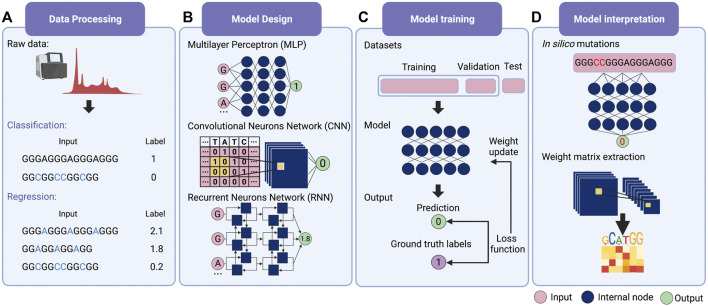FIGURE 1.
Schematic overview of deep learning workflow. (A) Data processing. Supervised learning requires explicit labelling of the data, including class numbers in classification questions and values in regression questions. (B) Model design. Multilayer perceptron (MLP), convolutional neural network (CNN) and recurrent neural network (RNN) are the three main families of deep learning architecture. Typically, deep learning models assemble different architectures based on data structures. (C) Model training. The total training data is first divided into the training set, the validation set and the test set. Then the input data is passed into the model to obtain the predicted values. The loss function is applied to evaluate the difference between the predicted and the true values, whereby the model weights are updated. (D) Model interpretation. Features’ importance can be obtained by in silico mutations. For the CNN model, the features can also be evaluated by extracting the weight matrix of the filter.

